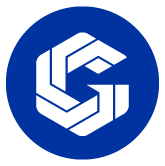

|
Not Found |
| Major: 3448
Catalog Year: 2023-2024
Effective Term: 2015 Fall
Last Admit Term: (Mor)
Award: AAS Total Credits: 60-96 CIP Code: 46.0502 |
Primary College:
Initiating College: Gateway Community College
Program Availability: Not Found
Program Availability: College-Specific (Mor)
Field of Interest: Not Found
Instructional Council: Occupational Administrators GPA: 2.00 |
|
SOC Code:
| |
|
Program Prerequisites: None
|
|||||||||||
| Required Courses | |||||||||||
|---|---|---|---|---|---|---|---|---|---|---|---|
Certificate of Completion in Construction Trades: Pipe Trades - Pipefitter - Refrigeration (5423) 34-66 | Credits: 37-69 | ||||||||||
| Restricted Electives | |||
|---|---|---|---|
Students should choose 0-3 credits from the following list of courses to complete a minimum of 60 credits for the AAS degree. Any 100-200 level prefixed courses may be selected, except courses used to satisfy the Required courses area. | Credits: 0-3 | ||
| General Electives | |||
|---|---|---|---|
|
| Credits: | ||
| General Education Requirements | |||
|---|---|---|---|
| General Education Requirement | Credits: 22-27 | ||
| General Education Core | Credits: 12-17 | ||
| First-Year Composition | Credits: 6 | ||
| + ENG101 First-Year Composition (3) OR
+ ENG107 First-Year Composition for ESL (3) AND + ENG102 First-Year Composition (3) OR + ENG108 First-Year Composition for ESL (3) OR + ENG111 Technical and Professional Writing (3) 6 | |||
| Oral Communication | Credits: 3 | ||
| COM100 Introduction to Human Communication (3) OR
COM110 Interpersonal Communication (3) OR + COM230 Small Group Communication (3) 3 | |||
| Critical Reading | Credits: 0-3 | ||
| + CRE101 College Critical Reading(3) OR
+ CRE111 Critical Reading for Business and Industry (3) OR Equivalent as indicated by assessment 0-3 | |||
| Mathematics | Credits: 3-5 | ||
| + MAT120 Intermediate Algebra (5) OR
+ MAT121 Intermediate Algebra (4) OR + MAT122 Intermediate Algebra (3) OR Equivalent course OR satisfactory completion of a higher-level mathematics course 3-5 | |||
| General Education Distribution | Credits: 10 | ||
| Humanities, Arts and Design | Credits: 3 | ||
| Any approved general education course in the Humanities and Fine Arts area. 3 | |||
| Social-Behavioral Sciences | Credits: 3 | ||
| Any approved general education course from the Social and Behavioral Sciences area. 3 | |||
| Natural Sciences | Credits: 4 | ||
| Any approved general education course from the Natural Sciences area. 4 | |||
| Program Competencies | |||
|---|---|---|---|
| 1. Demonstrate computer skills. (BPC/CIS+++++)
2. Analyze system design and operation of a refrigeration system. (FAC/HVA101, FAC/HVA101LL, PFT101, PFT101AA, PFT101AB, PFT101AC, PFT102, PFT102AA, PFT102AB, PFT102AC, IRW/PFT103, PFT103AA, PFT103AB, PFT103AC, PFT112) 3. Analyze system design and operation of an air conditioning system. (ELC/FAC/HVA105, ELC/FAC/HVA105LL, FAC/HVA210, PFT202) 4. Evaluate electronic devices specific to facilities maintenance. (ELC/FAC/HVA105, ELC/FAC/HVA105LL, PFT112 5. Interpret wiring diagrams and analyze motor control electrical problems. (ELC/FAC/HVA115, ELC/FAC/HVA115LL) 6. Analyze electrical wiring design and operational malfunctions related to service and maintenance of refrigeration/air conditioning systems. (ELC/FAC/HVA115, ELC/FAC/HVA115LL, PFT202) 7. Analyze system design and operation of a hydronic heating and cooling system. (FAC/HVA210, FAC/HVA210LL) 8. Demonstrate pipe joining methods and describe their use in the field. (PFT102, PFT102AA, PFT102AB, PFT102AC, IRW/PFT103, PFT103AA, PFT103AB, PFT103AC) 9. Calculate heating and cooling loads based on the American Society of Heating, Refrigeration, and Air Conditioning Engineers (ASHRAE). (IRW/PFT103, PFT103AA, PFT103AB, PFT103AC) 10. Safely use hoists, hoisting equipment, and hoisting signals. (IRW/PFT103, PFT103AA, PFT103AB, PFT103AC) 11. Explain the impact of plumbing, mechanical, building, and electrical codes as it relates to job functions in the industrial field. (PFT112) 12. Demonstrate safe soldering and brazing techniques in all positions. (PFT112) 13. Describe special emergency procedures which apply to hazardous chemicals. (PFT112) 14. Review the types of refrigeration and air conditioning expansion devices and describe the functions and application of each. (PFT112) 15. Describe correct installation procedures for thermostatic expansion valves. (PFT112) 16. Arrange and install piping and piping materials in a refrigeration/air conditioning system. (PFT112) 17. Test, evacuate, and charge a refrigeration system. (PFT112) 18. Read, interpret, and draw diagrams, shop drawings, and related views used in the refrigeration trade. (PFT113, PFT113AA, PFT113AB, PFT113AC) 19. Create sections and isometric drawings for piping systems. (PFT113, PFT113AA, PFT113AB, PFT113AC) 20. Evaluate selected heating and cooling systems to determine proper air and water flow and maintain desired temperature and humidity. (PFT202) 21. Given maintenance problems common to solar heat systems, use manufacturer`s manuals to troubleshoot the problem. (PFT202) 22. Compare the construction and operation of steam and hot water boilers. (PFT205) 23. Given maintenance problems common to boilers, diagnose the problem and describe repair or replacement procedures required. (PFT205) 24. Demonstrate and describe procedures for boiler water testing and treatment. (PFT205) 25. Review the principles of combustion and methods of testing combustion efficiency and firing rates in oil and gas burners. (PFT205) 26. Describe the operation and function of difference pneumatic control devices. (PFT207) 27. Apply tools and procedures to installation and service problems on total pneumatic systems. (PFT207) 28. Perform routine compressor maintenance and repair including teardown, inspection, and start up. (PFT210) 29. Describe the typical instrumentation equipment employed in a facilities system and describe a systematic process for diagnosis and repair of service problems. (PFT213) 30. Discuss the importance of customer relations to a successful service operation. (PFT213) 31. Describe a systematic process for diagnosis and repair of service problems. (PFT213) | |||
|
+ indicates course has prerequisites and/or corequisites.
++ indicates that any suffixed course may be selected. MCCCD Governing Board Approval Date: March 27, 2012 | |||